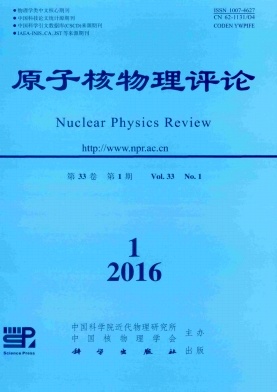高能电子束辐照模式蛋白辣根过氧化物酶的损伤作用研究
doi: 10.11804/NuclPhysRev.33.01.088
- Publish Date: 2016-03-20
-
Key words:
- horseradish peroxidase /
- high-energy electron-beam /
- non-thermal atmospheric plasma /
- spectroscopy
Abstract:
作为一种载能粒子,高能电子束具有能量利用率高、贯穿深度大、方便实用等优点,可以用来杀灭细菌和抑制病原体生长,因而被广泛应用于食品保质储藏和医疗卫生等方面。但是,对于高能电子如何与生物及其生物分子发生作用,以及作用的过程、方式、效果和机理等方面,人们还缺乏深入、细致的了解。本研究利用高能电子束辐照模式蛋白酶辣根过氧化物酶(HRP:horseradish peroxidase),研究了电子束对它的损伤作用和机理。研究发现,电子束损伤HRP 的方式主要通过羟基自由基破坏蛋白质肽链,同时,辐照产生的活性氧物质也会作用于HRP 分子活性中心引起其辅基血红素的损伤。这与我们以前研究的等离子体放电辐照HRP其损伤主要通过H2O2 作用于变性蛋白血红素引起酶失活有所不同。进一步,通过利用活性氧和自由基清除剂的方法,具体分析和阐明了电子束辐射条件下同活性氧和自由基在损伤HRP 过程中所起的破坏作用。
As one kind of charged energetic particles, high-energy electron-beam (e-beam) can kill bacteria effectively; and because of its advantages of low-cost and high-efficiency, e-beam has been widely applied in food sterilization and storage industry as well as biomedical areas. However, currently we still lack the in-depth understanding of the mechanism of the interactions between high-energy particles and biological systems. To this end, we thus initiated the study of e-beam induced damage of horseradish peroxidase (HRP: horseradish peroxidase). Our results revealed that the e-beam induced damage of HRP was mainly through the hydroxyl radical attack on the polypeptide chains, and at the same time, the heme active site of HRP was also injured by the reactive oxygen species (ROS) produced by the electron-beam. This hydroxyl radical damage mechanism is different from the hydrogen peroxide damage mechanism that plays the dominant role in non-thermal plasma treatment as we reported previously. Moreover, by using the ROS and free radical scavengers, we analyzed and identified the major factors that contributed to the HRP damages.
| Citation: | MA Shanshan. 高能电子束辐照模式蛋白辣根过氧化物酶的损伤作用研究[J]. Nuclear Physics Review, 2016, 33(1): 88-93. doi: 10.11804/NuclPhysRev.33.01.088 |






 甘公网安备 62010202000723号
甘公网安备 62010202000723号 DownLoad:
DownLoad: